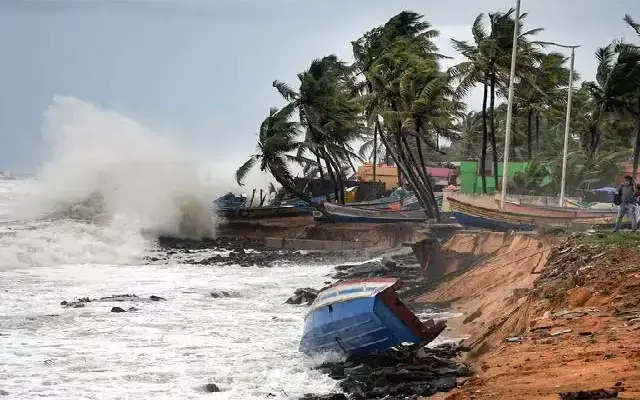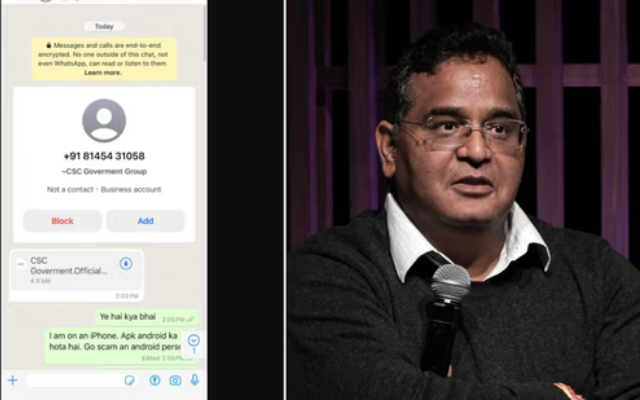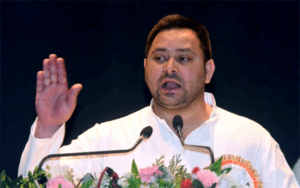
The continuous push of the Prime Minister of India, Narendra Modi to the powers that govern our education system, to move from the realm of the well-vocalized policies of the past to real action on the ground, that has characterized the working of this Government since it took over the reins of office last year for a second term last year, has now created a platform that will ensure all Indians are treated alike because they are Indians and nothing else. It is also expected to bring Indian Education on par with the rest of the world in terms of the quality of its degrees and education methodologies itself. It is a big transformation move that was long overdue.
Given the disparities that have always plagued this nation, the NEP now ensures that all Indians will be treated alike, get the best that the nation has to offer, so that they, in turn, can return their best to the nation. Bringing together equal opportunities, to learn, to earn, to grow, to assimilate one and all alike into our common path as members of one nation is the striking feature of this new policy. Equality of all educational institutions, faculty qualifications, unified boards for administration and evaluation, and aptitude based movement of children to the stream most promising to each of them are the cornerstones of this new framework.
This initiative has clearly not happened overnight; several months of deep study and hard work have gone into the formulation of this policy. The NEP 2020 aims at making “India a global knowledge superpower”, says the Hindustan Times.
Historically Education Policy was reviewed regularly up to the mid-seventies and then abruptly dropped once it was placed in the Concurrent List. Thereafter A National policy on Education was published in 1986, which was modified in 1992 into a Programme of Action after which the topic was never a part of Policy discourse.
The TSR Subramaniam Committee Report of 2016 and the Dr K Kasturirangan Committee Report of 31 May have now brought to bear the fact that several disparities exist that need to be handled and need to be handled now.

Renaming the Ministry from MHRD to Ministry of Education and allocation of 6% of the GDP to Education, Integration of Vocational, Teacher and Professional Education, the evolution of standalone institutions into multidisciplinary facilities, creation of Special Education zones, and establishing a National Educational Technology Forum are just a few of the steps that are being taken.
Salient Features of the Policy:
- 10+2 board structure is dropped.
- The new school structure will be 5+3+3+4.
- Up to 5 y/o pre-school, 6 to 8 Mid School, 8 to 11 High School, 12 onwards Graduation.
- Any Degree will be 4 years. Post-graduation will be one or two years making for a total of 16 years of education on par with international standards.
- 6th Std onwards vocational courses will be available.
- From 8th to 11th students can choose subjects.
- All graduation courses will have a major subject and minor subject, the student can choose any combination, say, Physics as Major and Music as a minor.
- All higher education will be governed by only one authority.
- UGC and AICTE will be merged.
- All Universities, whether government, private, Open, Deemed, Vocational, etc will have the same grading and other rules.
- New Teacher Training board will be set up for all kinds of teachers in the country, no state can change.
- Level of Accreditation to any college will be based on its rating, the college will get autonomous rights and funds.
- The new Basic learning program will be created by the government for parents to teach children up to 3 years at home and for preschool 3 to 6.
- Multiple entries and exit from any course.
- Credit system for graduation for each year, the student will get some credits which he can utilize if he takes a break in the course and comes back again to complete the course.
- All school exams will be semester wise twice a year.
- The syllabus will be reduced to core knowledge of any subject only.
- More focus on student practice and application of learned knowledge.
- For any graduation course if the student completes only one year he will get a basic certificate, if he completes two years then he will get a Diploma certificate and if he completes a full course then he will get a degree certificate. So no year of any student will be wasted if he breaks the course in between.
- All the graduation course feed of all Universities will be governed by the single authority with capping on each course.
Level playing field
With the objective of creating a level playing field for all, a National Mission on Mentoring, creation of an Independent Board of Governors, Single regulator for Higher education (Excluding Medical and Engineering), a transparent self-disclosure to replace inspections, common norms for all Higher Education Institutions, both public and private, and fee fixation in a regulatory framework will also be implemented. Graded Autonomy and phasing out of the affiliation system are the starting points for the major reforms in Higher Education.
 Promotion of Skill-based learning early on
Promotion of Skill-based learning early on
Promotion of Traditional arts and skills will be driven by the placement of Artists-in-Residence in Schools. Gender inclusion, early childhood care, reduction of the core curriculum from class 6 onwards, along with 360-degree Holistic monitoring, and lowering of the stakes of board examinations are also on the cards.
A firm timetable has also been laid down so that Teachers would be ready for evaluation by 2023, a National Mission would be set up for attaining foundational learning and numeracy skills by 2025 and universalization from ECCE to Secondary Education by 2030 to align with SDG4 and returning of over 2 crore children to the classroom who are now missing out on studies are the main outcomes that are targeted by this program.
Pilot studies, content creation, and expansion of platforms are being used to ensure the inclusion and access to all children, including the gifted and the disadvantaged. Multilingualism is also being incorporated so that no children would have to face exclusion just because of language.
A big shift in direction and criticism arising from it
While this program is a really big step without which it will never be possible for India to eliminate disparities and push for the betterment of all, the fact also remains that it is a big shift from the direction we have been following for decades. It is only natural that resistance is to be expected from a system that has literally forced itself to become obsolete by allowing the inherent disparities to continue and even flourish.
To quote Tanu Kulkarni writing in the Deccan Herald on “New Education Policy revives debate on the medium of instruction”, “School managements point out that the NEP goes against the apex court’s verdict stating that imposition of the mother tongue as the medium of instruction in primary classes was “unconstitutional”.
While it is obvious that more disagreements may make their presence felt in the coming days, the fact remains that the days of complacency have gone and we have to support the NEP 2020 and find ways to take these basic steps if we as a nation are serious about going forward.
Joy Jeevan Rai, the Principal of Canara High School, CBSE for the past 8 years, with 30 years of experience in Education, has also been the Centre Superintendent of AISSCE, JEE, CTET, NEET, UGC NET and CNS for evaluation since 2016 speaking to newskarkataka.com on the NEP, “It’s a revolution in education is implemented in the proper way. Not much can be said at this moment…I don’t really know how much groundwork is done. If done systematically then it will bring good results… I also had my principal colleagues to give their opinion. Most of them said there is no much clarity They have not said whether it will be implemented at a time or step by step, Media says step by step’.”
A critique of New Education Policy on Dr Shashi Tharoor’s Facebook page stated while he found much to welcome in the Policy, the matter should have been tabled in parliament for discussion before announcing it. Dr. Tharoor was skeptical of the goals set by the government and questioned whether they would really be achievable.
 Resource allocation at 6% of the GDP, sharing of resources spread out over large areas, investment in advanced training of Anganwadi teachers were some of the factors he expressed his concerns about. He suggested that a discussion in the House would help in addressing concerns and he commended Dr Ramesh Pokhriyal Nishank and his team for their efforts.
Resource allocation at 6% of the GDP, sharing of resources spread out over large areas, investment in advanced training of Anganwadi teachers were some of the factors he expressed his concerns about. He suggested that a discussion in the House would help in addressing concerns and he commended Dr Ramesh Pokhriyal Nishank and his team for their efforts.
Fiona, the mother of Arathi who cleared her CBSE examination for Class 10 told Newskarnataka.com, “The Education Policy is a renaissance in education, an awakening call to refine education. Replacing the number of books in the school bag and the quantity of knowledge, rote learning, cramming for marks, with practical skills and application of knowledge is mandatory, making education student-centric from book-centric. This approach will arouse sufficient interest in the student in the subjects of his intellect, with just a basic knowledge of minor subjects. A noteworthy point is that of training parents to instruct the child until three years. As the child first learns from the mother’s lap and hearsay, these seeds of education have to be correct as this will be the foundation that will mould the child into a humanitarian and educated citizen of India.”
Arathi for her part had the following observations on the salient points of the Policy:
- The education of a student is such that from 6 years to 15 years they learn all subjects. This helps to have a basic understanding of the entire world around the student. Having a basic understanding of everything is not a punishment. At the age of 15 years, basic knowledge of all subjects would ensure that the student is better placed to take a decision on the stream to be selected for a career.
- Now, by Class 10, many students will have decided their subjects of interest which in turn will be pursued by them in PUC or Class 11 and Class 12. For example, Science, Arts, Commerce etc.
- Dropping the +2 system and making students choose subjects of their choice at Grade 8 may significantly increase the amount of stress of career planning on students.
- Dilution of the importance of core subjects would have to be matched with the results of Psychometric aptitude tests to see if the student really needs vocational training or not.
- In this case, there should not be so much liberty given to students to choose subjects of their choice because they should not repent later on. Choices should be given from 11th grade or PUC only.
- Grouping of subjects would have a critical effect on the choice of career and flexibility in this aspect to create a very high risk.
- Standards 8-12 Everything is fine as long as it is set up and then maintained uniformly all over the country.
- One of the best things in the entire policy is that Parents should be able to teach their kids, a problem could be faced in the case of uneducated parents who have to go through this.
Overall though it is excellent and helpful for overall development.
While it is obvious that more disagreements may make their presence felt in the coming days, the fact remains that the days of complacency have gone and we have to support the NEP 2020 and find ways to take these basic steps if we as a nation are serious about going forward.


















